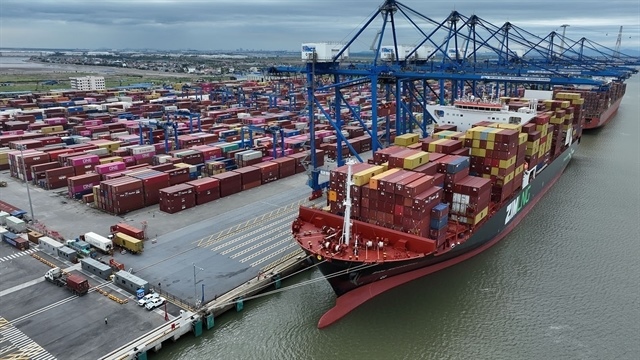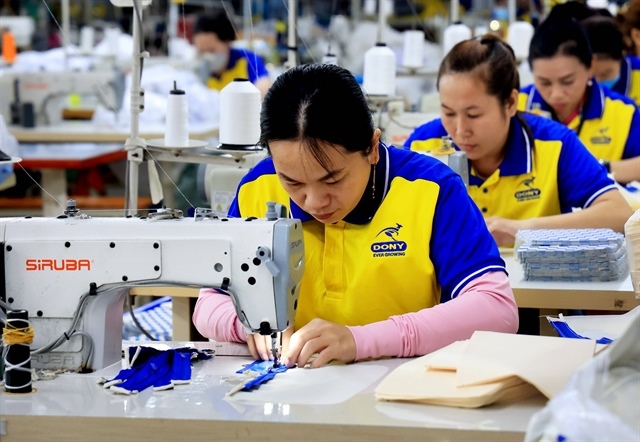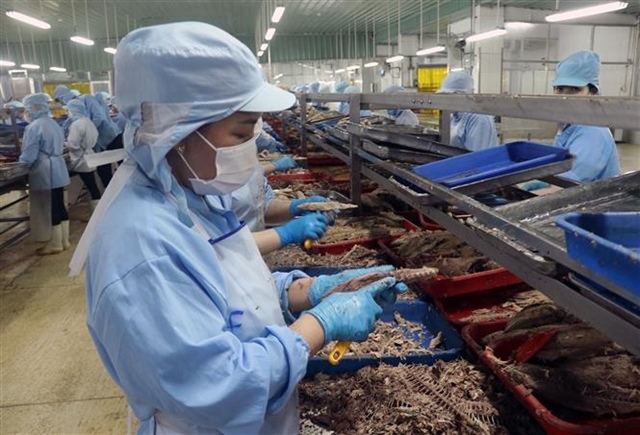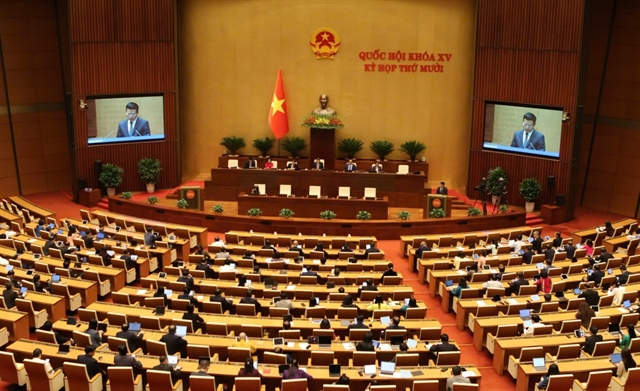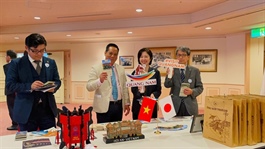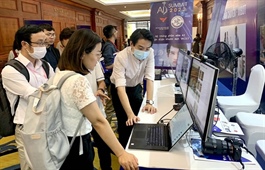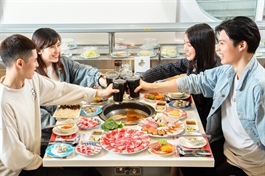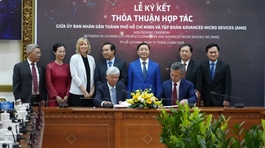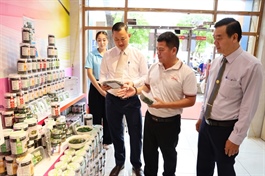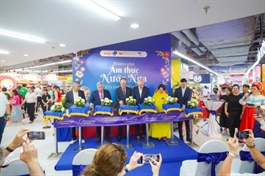Seafood industry strives to achieve its growth goals
Seafood industry strives to achieve its growth goals
Việt Nam ranks third in the world for seafood exports, accounting for over seven per cent of the global market share, behind China and Norway.
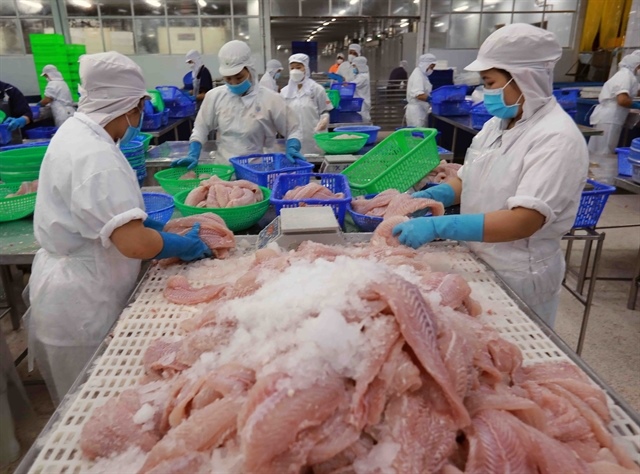
A tra fish processing plant in Đồng Tháp Province. — VNA/VNS Photo |
The Vietnamese seafood business community aims to modernise and sustainably develop the sector, making it even more globally competitive by 2030.
Việt Nam ranks third in the world for seafood exports, accounting for over seven per cent of the global market share, behind China and Norway, according to the Vietnam Association of Seafood Exporters and Producers (VASEP).
However, the industry is facing many challenges and fierce competition amid global trade volatility.
The measure of the sector’s development is not only based on export figures, but also on improvements in supply chain efficiency and profitability across the entire value chain.
One of the key issues that the Vietnamese seafood industry needs to address is the stagnant exports it has experienced over the past five years. Exports have remained at around US$8-10 billion annually (except in 2022).
This figure is far from the target of $14-16 billion set in the seafood sector’s development strategy for 2030.
VASEP Vice President Trương Thị Lê Khanh said that the seafood industry was facing both external and internal challenges.
These included climate change and the depletion of natural resources, rising production costs due to global economic fluctuations and dependence on imported raw materials, she said.
The industry's small-scale production model also leads to high production costs, making it difficult to remain competitive.
Major markets are increasingly applying strict standards regarding quality, food safety and environmental sustainability, limiting the ability of businesses to access these markets.
The EU’s 'yellow card' for illegal, unregulated and unreported (IUU) fishing, the US’s Marine Mammal Protection Act, anti-forced labour laws and e-traceability rules require businesses to change their management mindset, raise compliance costs and invest in technology.
Meanwhile, the Vietnamese seafood industry is also struggling with a shortage of young, skilled workers in aquaculture, processing, and automated systems management.
The global logistics crisis, the Russia-Ukraine conflict, and 'friendshoring' policies that shift economic ties to political allies are reshaping seafood supply chains, making it more difficult for Vietnamese companies to reposition their markets.
This can disrupt trade flows, cause supply chain interruptions and escalate logistics costs.
International competition is becoming fiercer. Countries such as India, Ecuador, Thailand, and China are continually improving the volume and quality of their seafood exports.
India and Ecuador continue to expand shrimp production, adopting digital traceability and reducing costs by 10-15 per cent compared to Việt Nam.
China is boosting its processing capabilities, both for domestic consumption and exports, altering the global supply-demand balance.
However, Khanh noted that amid these fluctuations, the seafood industry is also witnessing many opportunities to grow production, boost exports and enhance its position.
The global demand for seafood is expected to rise as the world population grows, and there is a shift toward healthier eating habits, with more seafood in meals, she added.
The United Nations' Food and Agriculture Organization forecasts that global seafood consumption will grow at an average rate of 2.1 per cent per year from 2025 to 2030.
Pangasius, whiteleg shrimp, and other value-added seafood products are likely to continue growing in popularity in the US, Europe, and the Middle East.
Việt Nam benefits from preferential tariffs under multiple free trade agreements, which help shorten market access time and open opportunities to diversify raw materials for export processing.
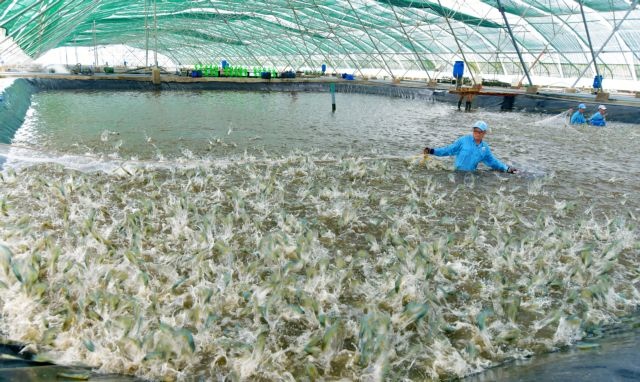
A tra fish processing plant in Đồng Tháp Province. — VNA/VNS Photo |
To overcome challenges and seize opportunities to grow market presence and solidify the country's position in the seafood industry, VASEP and its members must focus on enhancing benefits across the entire supply chain and promoting sustainable development.
Specifically, VASEP has proposed developing modern specialised farming zones for key seafood products.
They will also build detailed planning maps, clearly define industrial, semi-industrial and traditional farming zones, and connect seaports, processing zones and cold storage within the logistics chain.
Accelerating the issuance of farm codes, applying AI to monitor diseases and water quality, and addressing supply chain issues are also key focus areas.
Along with raw material issues, the capacity to integrate and adapt to trade trends in the seafood sector also needs to be improved.
The association said it will focus on linking the business community, innovating services, improving the quality of consultancy and member support, promoting policy dialogue, international networking and effectively addressing trade barriers during the 2025-2030 term.
VASEP aims to foster innovative initiatives in production, processing and distribution with a focus on green, clean and sustainable approaches.
It will also support businesses in building transparent, responsible supply chains, aiming to meet environmental, social and governance (ESG) standards.
The goal of the seafood business community is to modernise, develop sustainably and become even more globally competitive by 2030, with an export turnover target of $14-16 billion.
- 07:42 16/06/2025


